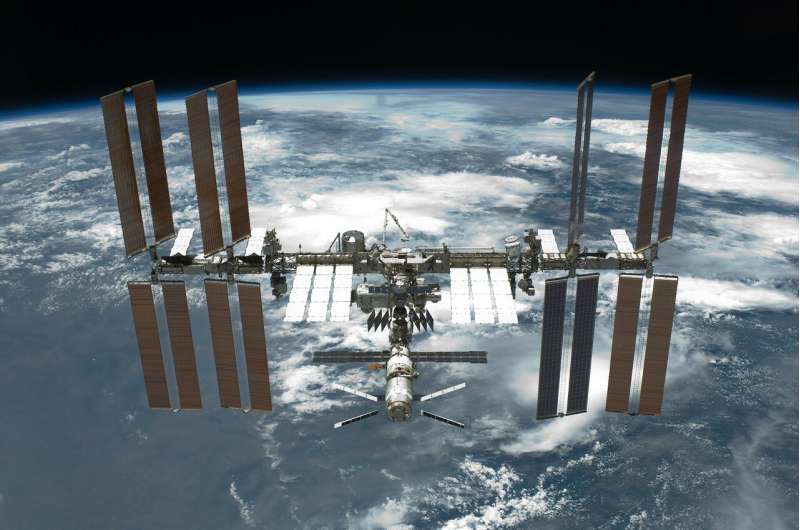NASA astronaut Mark Vande Hei holds the record for the longest straight stay on board the ISS, of 355 days.
Model of US-Russia cooperation
Five space agencies representing 15 countries operate the ISS.
NASA and the space agencies of Europe (ESA), Canada (CSA) and Japan (JAXA) run the US Orbital Segment, which is responsible for providing solar power. The Russian Orbital Segment, operated by Russian space agency Roscosmos, is responsible for propulsion and maintaining orbit.
The US and Russia each supply half of the food needed on the ISS, which is brought by uncrewed Russian and American supply ships, including craft from Twitter owner Elon Musk's SpaceX.
The station has a full crew of seven but the numbers aboard can reach up to 13 during crew rotations.
Eight spaceships can be connected at any one time to the ISS, which can be reached from Earth in about four hours.
The Soyuz has three places and the SpaceX's Dragon 2 has four.
There are always two spacecraft docked at the ISS to evacuate in the event of an emergency, but one of these suffered the meteorite hit.
18-hour days
Astronauts on the ISS are kept busy.
The day starts at 6 a.m. and lights go out at 10:30 p.m, after eight to ten hours of scientific experiments, two hours of physical activity to avoid muscle loss in microgravity and three hours for housework, repairs and leisure time.
Some 200 experiments are ongoing at any one time.
The key, says French astronaut Thomas Pesquet, is to keep busy, because "if you have nothing to do, it is a bit like a prison with a great view, and some fun stuff like floating."
Fiery waste removal
Nobody has a room of their own on the ISS much less a bed. Astronauts slip into sleeping bags stowed vertically.
There is very little water on the ISS: some of it is brought from Earth, with the rest extracted from the air and urine. Waste water is purified and recycled for use in meals.
The ISS has neither a shower nor a dishwasher: astronauts use wipes and air flushes remove solid waste, which is compacted in canisters and loaded onto the supply vessels, burning up on re-entering the Earth's atmosphere.
Uncertain future
The ISS was never built to last forever.
Both NASA and the ESA want to continue operations until at least 2030. But the Russians said in July 2022—in the midst of the war in Ukraine—that they wanted to withdraw after 2024 in order to set up their own station, without making it official.
After 2030, the ISS could be retired and plunged into an uninhabited area of the Pacific Ocean, according to NASA, which has announced plans to transition to commercial space stations.
© 2023 AFP



